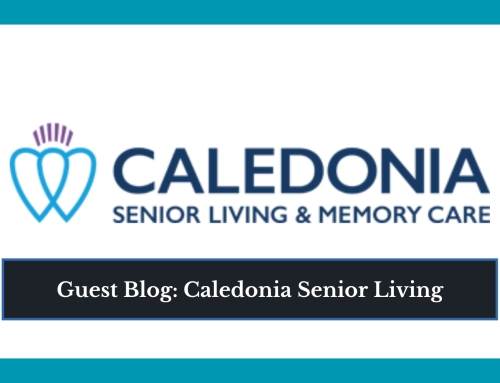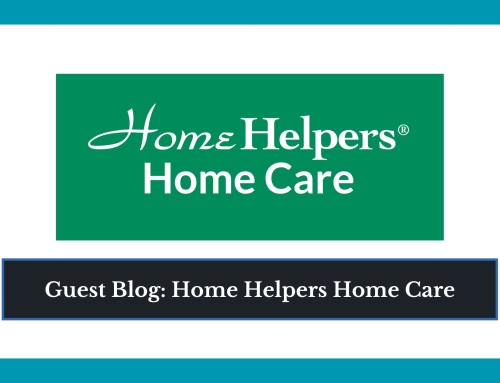
Guest Blog: Home for Life Advantage
Aging in Place: Why the Time to Act Is Now
Growing older doesn’t need to mean moving out. In fact, 75% of adults aged 50+ prefer to stay in their homes and communities as they age (AARP). The challenge? A whopping 90% of homes don’t meet basic safety standards for aging adults (Joint Center for Housing Studies).
The Hidden Toll of Falls
Falls are painful—and expensive. According to the Centers for Disease Control and Prevention (CDC), about 1 in 4 Americans over 65 fall each year, and roughly 3 million seniors visit the ER annually due to fall-related injuries. Also every 19 minutes an older adult dies from a fall related accident (NCA). In 2020, these falls cost $80 billion in non-fatal injury bills, with projected costs expected to exceed $101 billion by 2030 (CDC).
Modifications That Truly Make a Difference
Evidence supports it: 65% of home-modification studies show measurable benefits like fewer falls, improved independence, and reduced caregiver strain (National Association of Home Builders).
Grab Bars & Railings
Bathroom grab bars cut slip risk drastically, and railings on stairs and walkways offer essential support (NAHB).
Walk-In Showers & Nonslip Floors
76% of remodelers report growing demand for barrier-free showers, and non-slip flooring and adhesive strips in wet zones reduce accidents (Joint Center for Housing Studies).
Better Lighting & Entry Safety
Well-lit hallways and entrances are critical: poor lighting is a top fall hazard (National Institute on Aging). Zero-step entries and wider doorways also improve mobility and safety.
Lever Handles & Smart Tech
Lever-style door handles, which are easier to use for people with limited grip, are found in only 32% of homes today (NAHB). Meanwhile, 49% of seniors now use at least one smart home device, such as smart switches, medical alert systems, or voice assistants (AARP).
Cost vs. Care: Investing Wisely
Simple upgrades—like grab bars, lighting, and ramps—can cost a few hundred to several thousand dollars, while major remodels (like bathroom or kitchen overhauls) can range from $10,000 to $100,000 (NAHB).
Compare that to long-term care costs: assisted living averages $54,000/year, and nursing homes exceed $116,000/year (U.S. Department of Health and Human Services). The average nursing home stay for individuals is about 485 days depending on reason. Home modifications often increase property value, meaning they will pay for themselves within oncoming years—unlike institutional care, which typically results in ongoing financial loss.
How to Start: A Step-by-Step Checklist
Certified Aging-in-Place Specialists (CAPS) or occupational therapists can help create a tailored home safety strategy (NAHB).
Home Safety Audit
Inspect fall-risk areas like stairs, rugs, lighting, and bathroom surfaces. The CDC provides a detailed home safety checklist to help families assess risks.
Prioritize Entry Way
Getting into your home is the important first step into home modification. Handrails, wheelchair ramps, Vertical Platform Lifts (VPLs), & Stairlifts are great additions for easy entry way.
Tackle the Bathroom
Consider adding grab bars, a walk-in/barrier free shower, and a comfort height toilet.
Support Mobility Throughout
Install lever handles and handrails, widen door frames, and add no-step entries to key areas (Joint Center for Housing Studies).
Enhance with Tech & Care
Use smart lighting, voice-controlled switches, alert pendants, or consider a part-time caregiver support to promote independence when necessary (AARP).
Financing & Support
Funding options include home improvement grants, low-interest, Medicaid waivers, Veteran programs, and support from nonprofits (HHS). With median home equity for seniors over 65 at roughly $250,000, homeowners can also explore home equity loans to fund renovations (AARP).
Final Take
Adapting your home isn’t just renovation—it’s empowerment. Investing in accessibility allows you or your loved ones to remain secure, independent, and connected. As healthcare and institutional living costs soar, home modifications are a cost-effective, long-term solution that supports aging on your own terms (HHS).
Home for Life Advantage help upgrade homes and commercial buildings for all, including, but not limited to, individuals with mobility and limitations. Family owned, they are proud to be the leading provider of ADA accessibility equipment in the Greater Chicago area. Visit their website, homeforlifeadvantage.com, to learn more.
Works Cited
- AARP. “2021 Home and Community Preferences Survey.” AARP Research, Nov. 2021.
https://www.aarp.org/research/topics/life/info-2021/2021-home-community-preferences.html - Centers for Disease Control and Prevention (CDC). “Important Facts about Falls.” CDC.gov, updated Feb. 2024.
https://www.cdc.gov/falls/facts.html
- National Institute on Aging. “Falls and Older Adults.” National Institutes of Health, 2023.
https://www.nia.nih.gov/health/falls-and-fractures-older-adults
- Harvard Joint Center for Housing Studies. “Improving America’s Housing 2023.”
https://www.jchs.harvard.edu/research/improving-americas-housing-2023
- National Association of Home Builders (NAHB). “Aging-in-Place Remodeling Checklist.” NAHB.org.
https://www.nahb.org/advocacy/industry-issues/aging-in-place - U.S. Department of Health and Human Services. “Long-Term Services and Supports: What They Are and How They’re Paid For.” ACL.gov.
https://acl.gov/lts - “Get the Facts on Healthy Aging.” Get the Facts on Healthy Aging, www.ncoa.org/article/get-the-facts-on-healthy-aging/. Accessed 17 June 2025.





